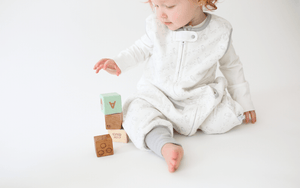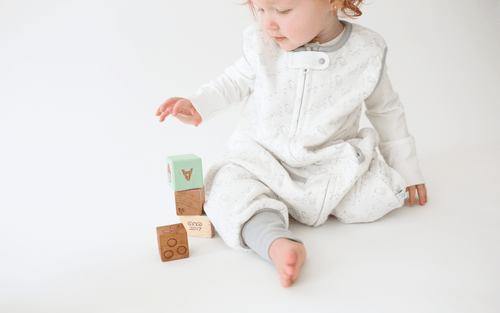Why Is My Toddler Not Going To Sleep
By : Tracie Kesatie, M.A.

It’s not uncommon for toddlers to resist taking naps or not going to bed. Have you ever asked yourself: Why is my toddler not going to sleep?
More often than not, this resistance is due to the fact that little ones are too busy to slow their bodies down. Separation anxiety and the desire to be with mom or dad can also contribute to this sleep resistance. Furthermore, limit testing (where children will go to great lengths to stall going to sleep) can also appear at this age. So what can you do to get your toddler to go to sleep? Here are some suggestions on how to handle sleep resistance with your toddler:
Getting Your Toddler to Sleep
- Rule out illness or any possible underlying medical condition (allergies, eczema, teething, etc.) that may be causing sleep challenges in your toddler. If a little one is not feeling well that can lead to sleep resistance and sleep disruptions. The first step would be to treat or address the underlying condition. Once resolved or well managed, then you can work on addressing any possible behavioral sleep challenges that may be present.
- Ask yourself if your toddler is currently going through a developmental milestone (walking, language burst, potty training, etc.) and/or sleep regression (a period of time when a little one’s sleep patterns shift) as they both can temporarily interrupt sleep. The good news is both developmental milestones and sleeps regressions pass - typically after a few weeks. The key is to stay as consistent as possible during these times following your toddler’s normal sleep schedule and health sleep routines so that new, undesired habits do not get established.
- Create a sleep-friendly environment. Like adults, toddlers sleep best in a cool, dark, quiet sleep environment. If your toddler expresses a fear of the dark it’s totally fine to use a dim night light (if you can read a book with the nightlight on, it’s too bright). And if you’re worried about household or outside street noise waking your toddler you can consider using a white noise machine. You just want to make sure that the white noise machine is not too loud or located too close to where your toddler is sleeping. Typically placing the white noise machine on the other side of the bedroom and keeping the volume no louder than what it sounds like when your shower is running is best.
Relevant Reads:
- Implement a soothing bedtime routine and stick with it. Having a calm, predictable, and consistent bedtime routine (which you can modify and also do before nap time) can really be beneficial. Having a routine helps children switch gears and prepare for sleep. An example of a bedtime routine for a toddler is: clean up toys, bath, put on pajamas, brush teeth, cuddles, books, last trip to the bathroom (if applicable), and into the crib/bed.
- Keep stimulation before nap time and bedtime to a minimum. Watching TV, participating in active games, or playing with loud toys right before nap or bed can be very stimulating to young children and can cause them to have difficulty settling down to sleep. Quiet activities like playing with puzzles, doing arts and crafts, and/or reading books tend to be better before sleep time.
- Help your toddler shift gears between activities. Prepare your child to know that you will be helping him/her transition from one activity (playing) to the next (getting ready to nap). For some children, it can be helpful to use a timer to help them understand when one activity is finished and it’s time to move on to the next.
- Nighttime fears are not uncommon amongst toddlers. If your little one is having some age-related fears this can lead to stalling and curtain calls at bedtime. Some things that can help include using a nightlight, playing/spending time in your child’s room during the day, demystifying the dark by making shadow puppets, giving your toddler a lovey or transitional object to cuddle with, and reassuring your child that he/she is safe.
- Set clear, but loving boundaries with your child when it comes to sleep. Having consistent boundaries actually helps toddlers to feel safe and secure. Since negotiating and fulfilling requests after lights out unintentionally lead to a delayed onset of sleep, make sure to fulfill all requests (one last question, more water, one more trip to the bathroom, etc.) before lights out. If your toddler is making requests or trying to negotiate once lights are out, one approach is to occasionally respond with “I love you, goodnight” or whatever brief, but loving phrase feels right to you. By being present but not engaging your toddler will start to understand that once lights are out requests will no longer be fulfilled.






















